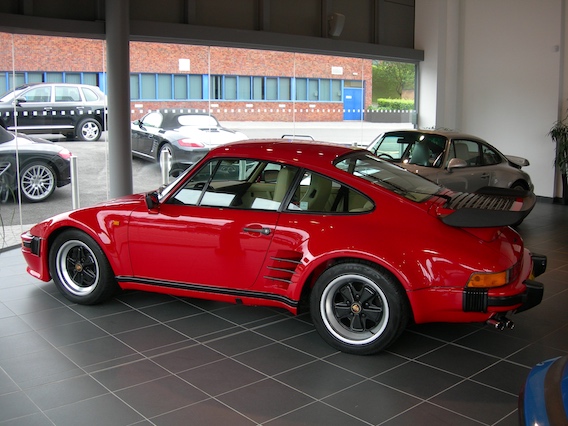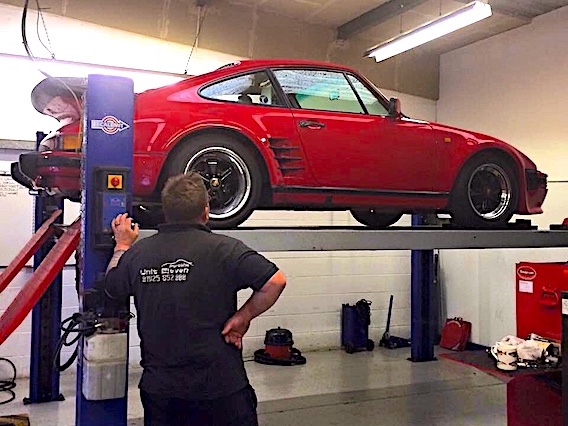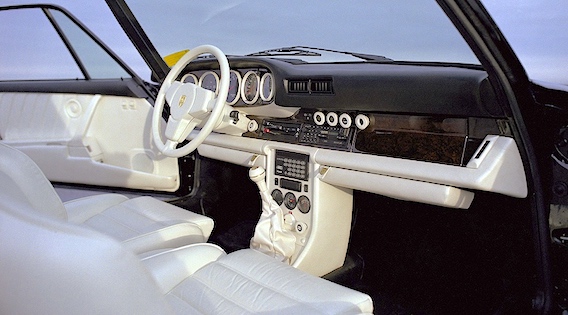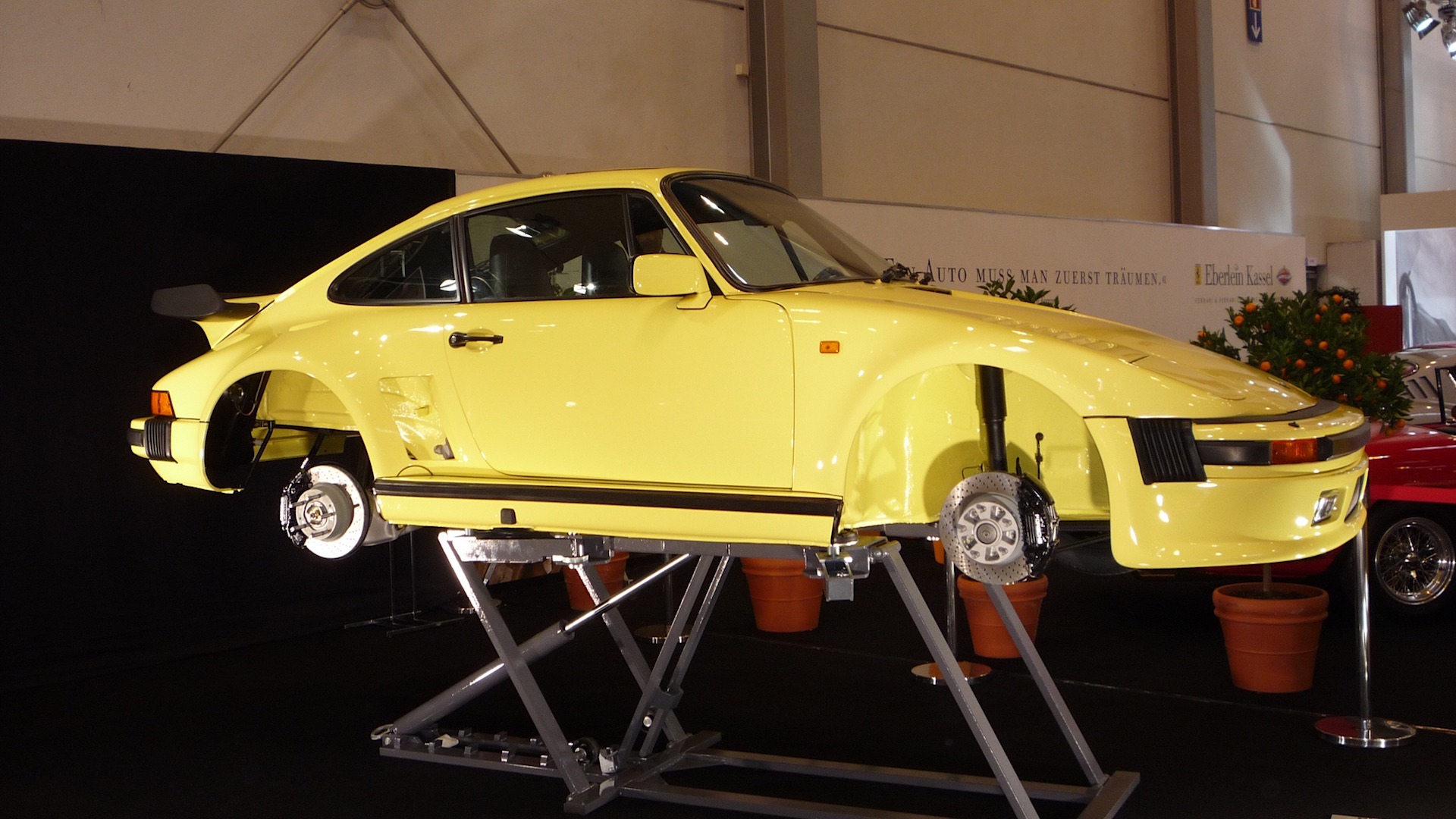Buyers Guide
The factors to look out for when considering the purchase of a 930 Slantnose comprise ‘standard 930’ checks applicable to all 911 Turbo models of this generation, plus those elements that are ‘Special Wishes Program-specific’. Note this guide does not cover the 964 Flachbau (or 911 Turbo 3.6 S) models, it specifically references the 1982-1989 G-series models only.
This buyers guide has been split into the main topic areas as follows:
Further information can be found on the Flachbau Forensics page offering a guide to authenticity (how to spot a fake flachbau).
Buyers Guide
Bodywork Check-points
Whilst all 911s after 1976 were galvanised, the youngest slantnose models are at least 30 years old, and can suffer from poorly repaired accident damage, and rust. The ‘widow-maker’ moniker is less applicable to the later 930s however the cars still caught out many that had never previously experienced 300+ bhp and 80s turbo lag.
Body damage is a possibility. Check the consistency of shut lines around the car. Remove the carpet in the front trunk / boot space and inspect the panelwork and boot floor for signs of accident damage or creasing. In particular, check behind bumpers, and alignment of valance for panel damage. Review areas around popup lamps for stress cracks and paint damage due to badly aligned lamp pods.
Also check the underside of the floor pan for damage due to inappropriate jacking of the car - note: genuine Turbo S / Turbo SE models have jacking point extension tubes where boxed sill covers/rocker covers were fitted.

Check for rust:
Inspect the inner and outer wings around lights and bulkhead flanges. All slantnose wings are very expensive to replace so thoroughly check for damage.
Check inner sills and jacking points. Inspect door pillars and shut panel (kidney bowls) - mud collects from the wheels and rusts out the slam panel around the striker bar for the door locks and down to the sills. Check the fuel filler area from the top and underside. Inspect the battery tray area / front seam – battery acid and water ingress from leaking seals can cause rust. Carefully check the areas around the windscreen seal on the front scuttle (a window out repair). Water ingress here can cause electrical fires.
Get underneath the car and check the lower side of the fuel tank for damage or rust (most exposed area). Inspect the condition of the aluminium bumpers and bumper rubbers. Note that the rubber filler insert to the front side lamps is specific to the Turbo SE models (Hella square side lamps), and the mountings for the rubber inserts can rust out.
This buyers guide has been split into the main topic areas as follows:
Further information can be found on the Flachbau Forensics page offering a guide to authenticity (how to spot a fake flachbau).
Buyers Guide
Mechanics and Suspension:
Inspect the exhaust, cross-over pipes and heat exchangers. These can be repaired though replacement with stainless items can be expensive. Listen for exhaust leaks / chuffing sounds. Although more rare on later 930s, this could also be a sign that head studs have broken (head to barrel leaks). Verify that the wastegate valve only opens under load (rev engine). Check for white smoke after engine has been running a few minutes. Turbo seals / bearings can require replacement / rebuild. Inspect the oil pipes to front oil cooler. These pipes are specific to Euro / non-US (M505) cars and run through to the front trunk/load space under custom-made fibreglass covers. M505 coolers are under rear right wheel arch (note standard 930s had them in the front arch).
The clutch is robust on later 930s, though wear / replacement usually means dropping the engine and box to do the job properly. Once the engine is up to temperature, check the gearbox synchros for wear. The 915 box is more agricultural than the later G50. If the box is reluctant to change up easily, it could be as simple as the linkage requiring adjustment.
Like the 3.2 engine, the 930 unit can also succumb to valve-guide wear on higher mileage cars, resulting in evidence of oil smoke. Check for engine oil leaks - oil pressure should be circa 56psi (4.0 bar). Minor leaks are not uncommon. Return tubes can be replaced easily.
If it is an early slantnose that you are evaluating (pre-1984), it is worth checking to see if the later oil-fed cam-tensioners have been retro-fitted. If not, this is definitely an advisable upgrade.
Normal brakes, suspension bush and damper checks apply - be wary of lowered suspension and potential for damage to front valance and wings. Caliper heat-soak is not uncommon on 930s and can warp the disks. Check for judder. Verify original part numbers on wheels – genuine alloys are now very expensive. Early cars will be sitting on 7x15 (front) and 8x15 (rear) fuchs alloys, and later cars on 7x16 (front) and 9x16 (rear) fuchs, unless optional BBS equivalents were ordered from the Special Wishes catalogue.

This buyers guide has been split into the main topic areas as follows:
Further information can be found on the Flachbau Forensics page offering a guide to authenticity (how to spot a fake flachbau).
Buyers Guide
Interior and Electrics
Signs of damp carpets / floor pan rust could be caused by a leaking sunroof / blocked sunroof drains or by perished Targa / Cabriolet roof seals (if you are inspecting one of the rare M505/M506 Turbo Targa or Turbo Cabriolet models). The slantnose was never produced by the factory as a Targa or Cabriolet prior to 1987.
Cabriolet rear windows often require replacement, though those can be unzipped easily and a new one fitted as a replacement.
Most factory slantnose models were specified with one of three main central console designs that offered a range of custom extra equipment. Missing equipment should be noted accordingly. Some of the pre-M505/M506 Special Wishes cars and a high proportion of the later M505 cars just had the standard 930 floor console. Factory slantnose models also usually have one of several steering wheel designs; the standard Porsche wheel with one of three types of brass Porsche badge to the right side of the horn push (M505 cars), or a three-spoke Porsche wheel with central brass Porsche logo insert to boss (Special Wishes), an Italvolanti Type F / Ati wheel with three thin spokes each with horn buttons and a custom Porsche central padded boss (M506 and Special Wishes), and in rare examples, other custom-trimmed wheels from the Special Wishes catalogue.
Inspect the interior for wear to seating, and rips to headlining (leather headliners were an option and can tear with age). Verify that the space saver spare wheel, wheel jack, compressor, toolkit and towing eye are present. Make sure that the fibreglass trim mouldings that cover the front trunk/load space oil pipes (excludes M505) and headlamp mechanisms are intact and present. Check that the heater controls work. The flaps, motors and thermostat all can play up, and apply the usual electric window, mirror and sunroof checks.
Check the condition of relays / fuse box in front trunk. Slantnose models often had numerous interior extras fitted to custom centre consoles, often housing additional stereo and graphic equaliser equipment. Check wiring connections are intact / safe (where old equipment has been removed). Many Special Wishes cars had additional interior lighting / dashboard down-lighters / lighting to central consoles. Verify such illuminations work.
Note that 911 Turbo S / Turbo SE side lights on the front bumper can be different from standard 930/911 models. Factory cars used the standard loom, modified for those lamp units. Verify that side, main and fog lamps operate correctly. Genuine factory slantnose models have a single central headlamp motor (from a 928). Cars with twin motors, are after market builds and therefore should be evaluated with due consideration.

This buyers guide has been split into the main topic areas as follows:
Further information can be found on the Flachbau Forensics page offering a guide to authenticity (how to spot a fake flachbau).
